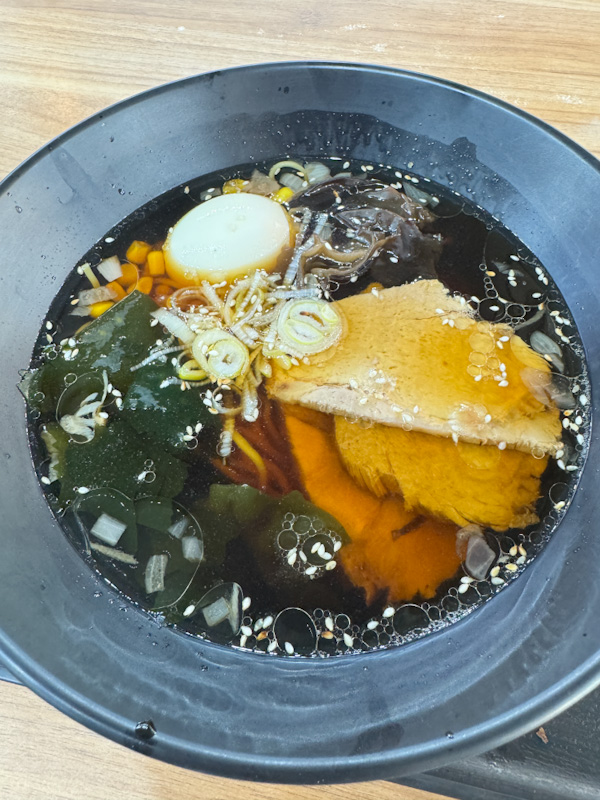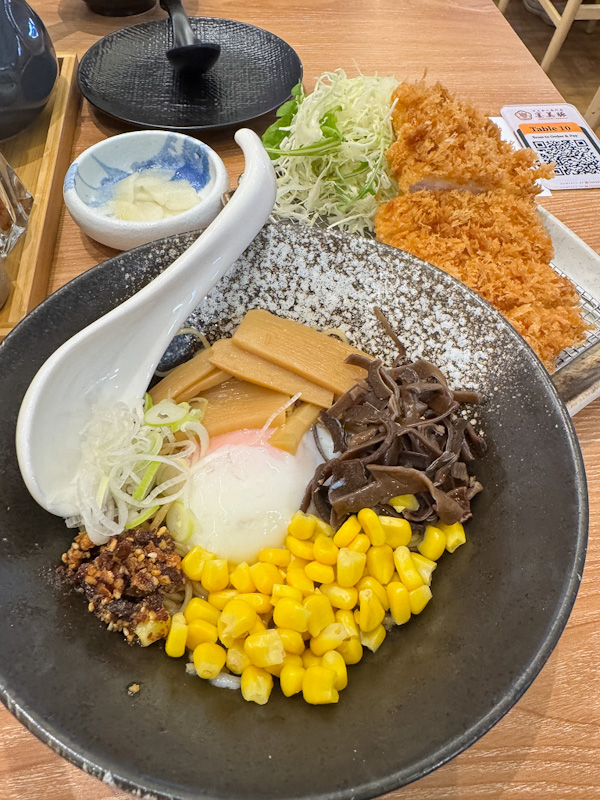WHAT WE ATE
- Nikutosake Signature Dry Ramen, 90/100 (revisted 8 Oct 2025, PLQ Mall)
- Buta Bara Tonkotsu Ramen, 55/100 (8 Oct 2025, PLQ Mall)
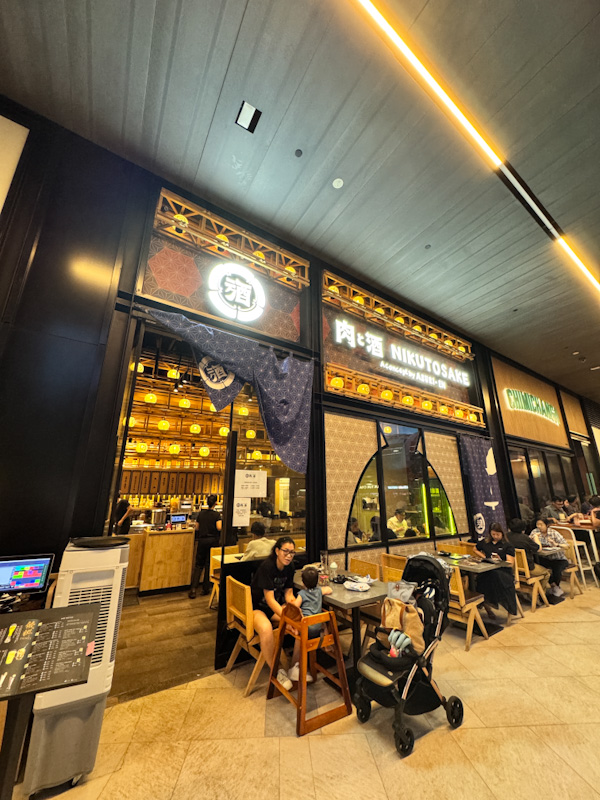
Nikutosake is a Japanese ramen-and-izakaya concept at PLQ Mall, Paya Lebar, created by EN Group / Aburi-EN—the team known for grilled meats. The name says it all: “niku” (meat) and “sake,” and the shop leans into both. By day you’ll find ramen and donburi; by night the crowd forms for teppan hot-plates, izakaya dishes, and a tidy list of beers, highballs, and sakes. If you’re mapping a ramen crawl in the East, this is an easy add to your Paya Lebar route.
What’s notable for ramen hunters: Nikutosake highlights a signature dry ramen that brings familarity of some mazesoba variants, plugging into a grilled-meat DNA you don’t always see in noodle-first shops. The kitchen’s broader menu also includes the usual tonkotsu options—worth knowing before you decide what to order.
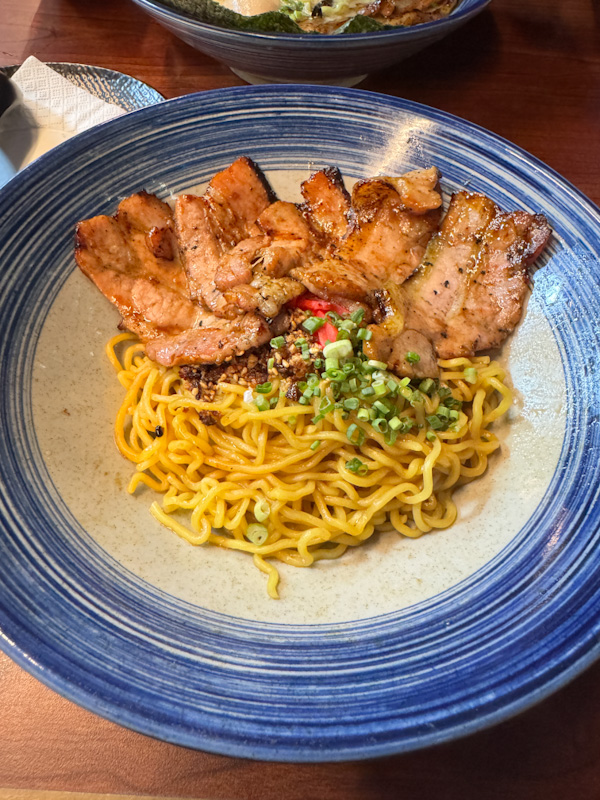
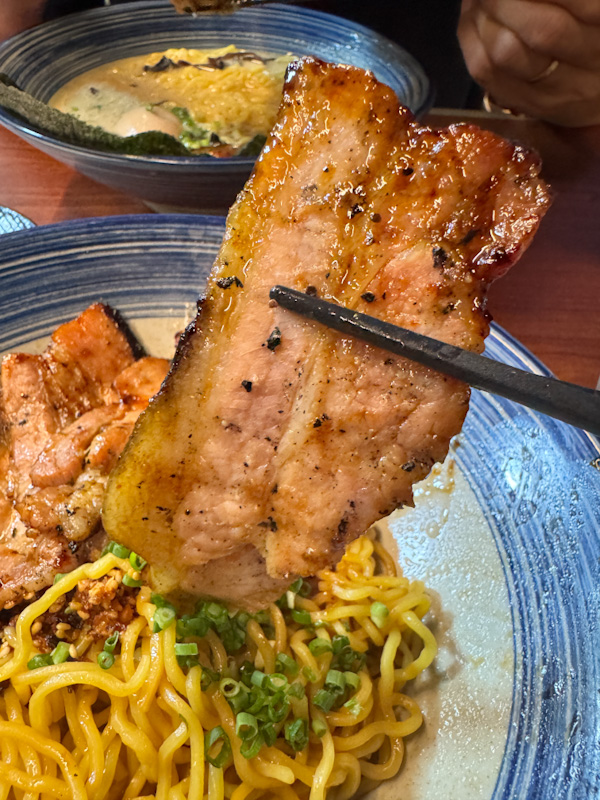
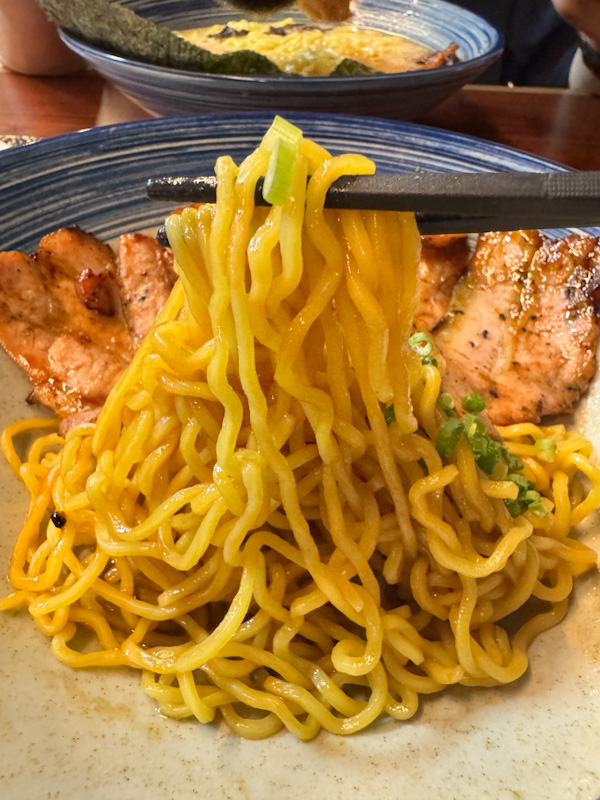
Nikutosake Signature Dry Ramen – 90/100
Noodle: 35/35
These bright yellow, medium-thick curly noodles absolutely slap. The texture lands right in that elusive sweet spot between firm and supple—mochi mochi in the truest sense, with each bite springing back just enough to remind you that someone in the kitchen actually respects their craft. Beyond the texture, the wheat aroma lingers—a deep, nutty-earthy note that gives the noodles real personality rather than being just a vehicle for the sauce. This is noodlework done with intention.
Sauce: 30/35
Since this is a dry ramen, the sauce has to do all the heavy lifting—and it does, gracefully. The yakiniku-style base carries a clear, soy-salt sharpness layered with a whisper of grilled smokiness. The oil content is measured: just enough to help the sauce cling and shimmer, but never enough to feel greasy. Each strand of noodle picks up that savoury glaze perfectly, and as you chew, the aroma of grilled meat subtly blooms in the background. It’s simple and honest—if there’s one place it could push further, it’s in depth; a touch more umami complexity would’ve turned great into transcendent. Still, what’s here is already compelling.
Meat: 15/20
A revelation for its price point. You get thick-cut pork belly slices that are properly seared and deeply marinated—juicy, tender, and packed with that ideal balance of savoury, sweet, and natural pork richness. There’s a lovely caramelized edge where the fat just begins to crisp, adding texture without losing the juiciness. The smokiness ties everything back to the sauce, creating a sense of unity across the bowl. It’s indulgent, yet confident enough not to overdo it.
Update from revisit: The chashu is a bit inconsistent during our revisit. It’s a lot tougher and chewier.
Topping: 10/10
Deceptively simple at first glance, but each topping earns its place.
- The crisp brown bits—likely fried garlic—burst with salty, umami crunch and deliver a deep, aromatic lift that punctuates every bite.
- The thinly sliced marinated ginger is an inspired move; its acidity resets the palate just when the sauce starts to feel heavy, keeping you coming back for another bite.
- The negi could use a touch more sharpness and bite, but it still brings that needed lightness to complete the balance. Nothing flashy, but everything in proportion.
Summary
This is how you do dry ramen. Everything feels considered, from the sauce to the toppings to the texture of the noodles. There’s depth, balance, and generosity. Honestly, it punches way above its price point.
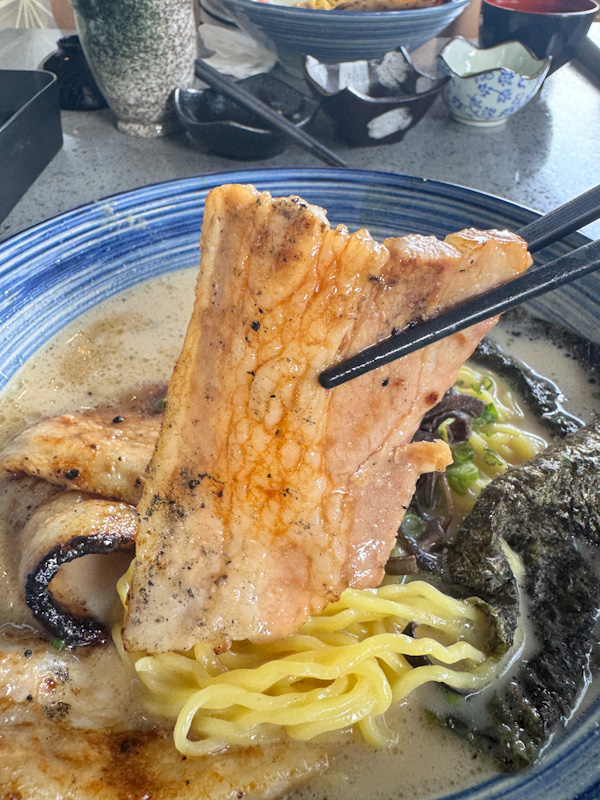
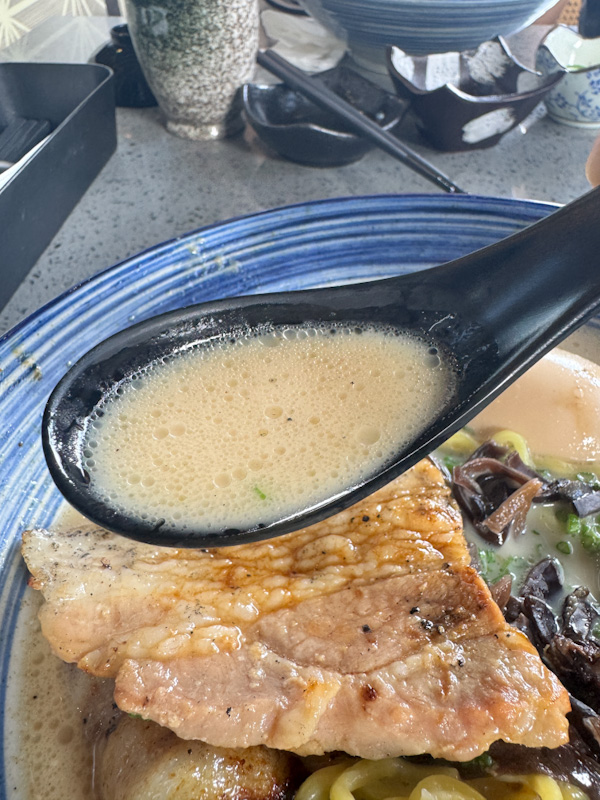
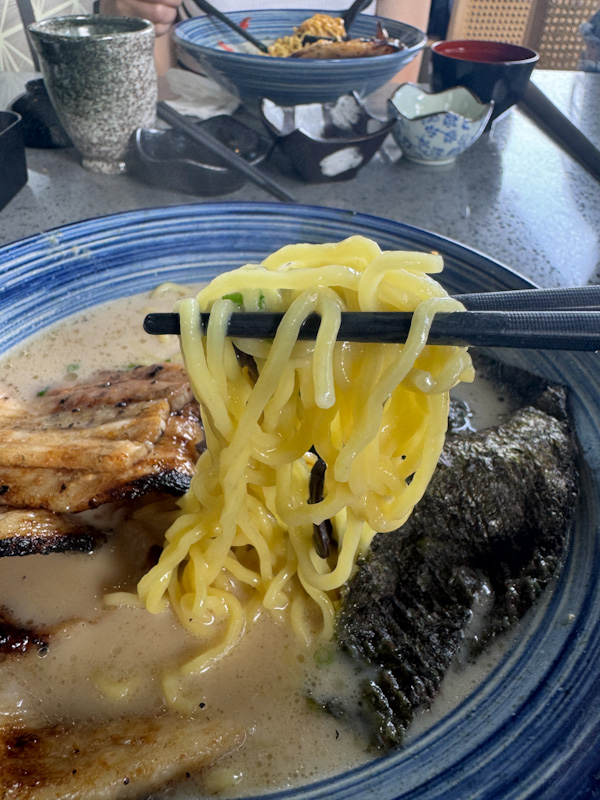
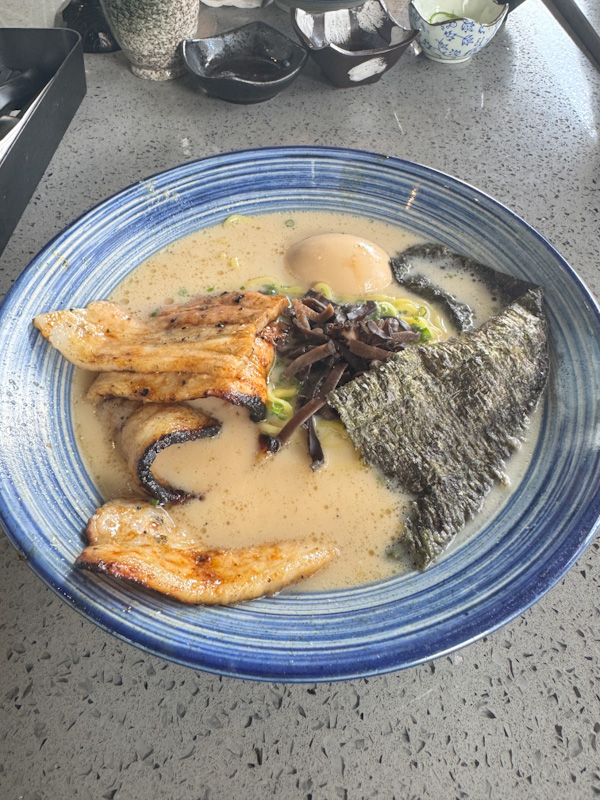
Buta Bara Tonkotsu Ramen: 55/100
Noodle: 15/35
The same medium-thick curly noodles form the base here, but they don’t hold up well in this tonkotsu broth. The texture leans soft—too much so—and the strands lose firmness as they sit in the soup. There’s a light chew at first, but it quickly gives way to a limp mouthfeel.
Taste-wise, the earthy wheat notes are faint yet clean, without any unpleasant alkaline aftertaste. However, this is a clear case of mismatch: the same noodle used in their dry ramen simply doesn’t perform in a soup-based bowl. What works in a sauce-forward setting feels underwhelming here. The noodles don’t quite latch onto the broth, resulting in a muted, one-dimensional taste.
Soup: 15/35
The first sip carries a light milky aroma and faint smokiness—likely from the aburi pork melting into the broth. There’s a trace of umami from the seaweed and a mild sweetness that attempts to round out the savouriness, but the overall impression remains thin.
While the head presents some promise, the body quickly falls short. The richness expected from a tonkotsu never materialises; it feels watered down, with neither the collagenic depth nor the buttery mouthfeel that defines a good pork broth. The end note leaves a lingering smokiness, but it’s faint and hollow—more suggestion than substance. The layering is minimal; what you taste at the start is what you get throughout.
Meat: 20/20
The saving grace of this bowl. The same thick-cut pork belly used in their dry ramen makes a repeat appearance, and it’s excellent. Generously portioned, each slice is juicy and well-rendered, striking a satisfying balance between chew and tenderness.
The savoury-sweet marinade hums in harmony with the natural pork flavour, creating a layered umami that doesn’t need the broth to shine. A gentle smokiness lingers, enhancing the meat’s flavour without overpowering it. This is the highlight—executed with confidence and consistency.
Other Toppings: 5/10
A few thoughtful but uneven touches.
- The seaweed adds subtle umami, though it mostly melts into the background.
- The marinated egg fares much better: the texture is spot-on, yolk still creamy, and the seasoning is well-judged—umami-rich with a hint of caramel sweetness beneath the salt.
- The negi, however, feels ornamental. Lacking crunch or sharpness, it neither refreshes the palate nor adds contrast, serving more as garnish than counterpoint.
Summary
Overall, this Buta Bara Tonkotsu Ramen shows flashes of craft—especially in the meat—but falls short where it matters most. The broth lacks weight and definition, and the noodles, while serviceable elsewhere, simply don’t belong in this bowl. It’s a ramen that satisfies in parts, but never quite comes together as a whole.
DISCLAIMER
One man’s meat is another man’s poison.
Find out more about our palettes and how we evaluate our ramen here. 😉

